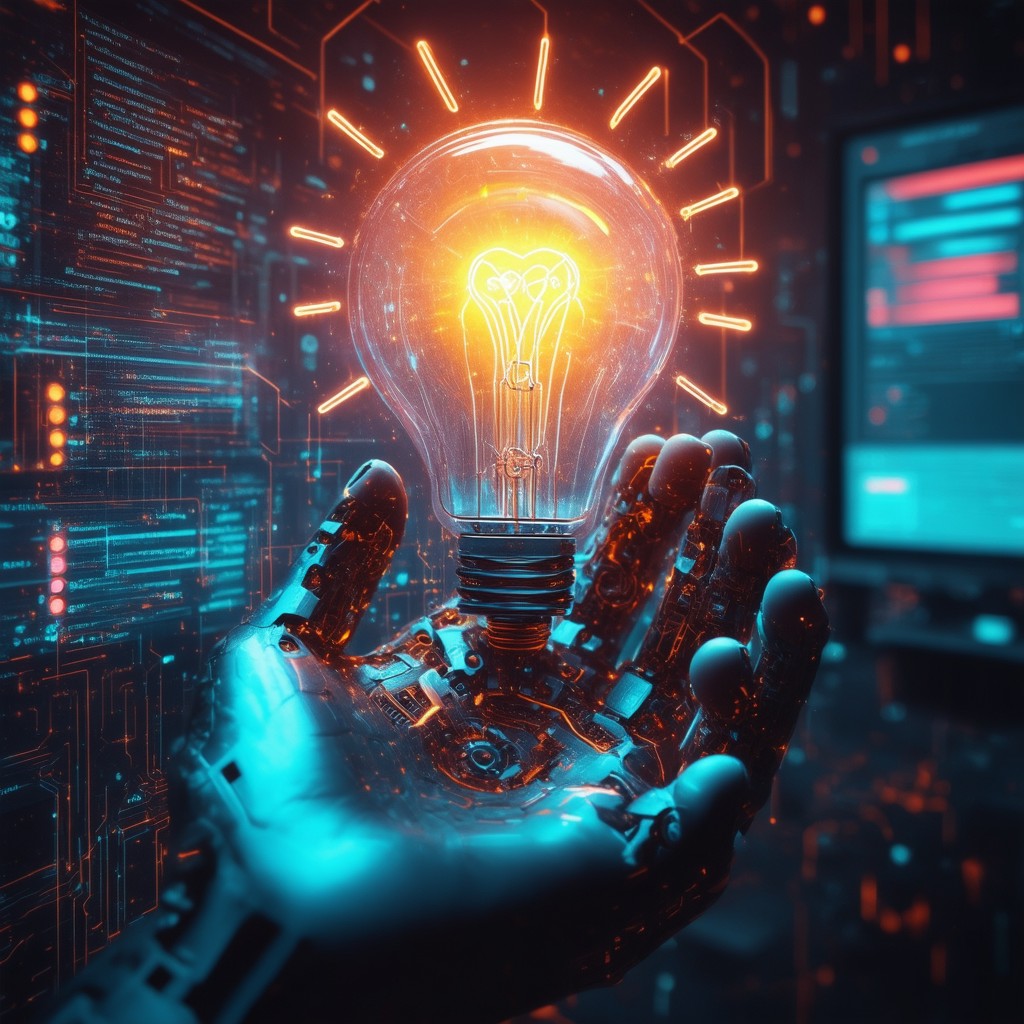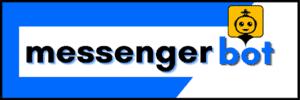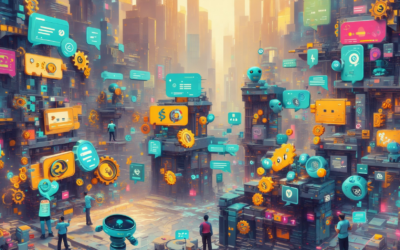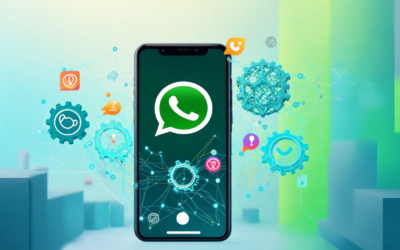Key Takeaways
- Mastering bot making involves selecting the right tools, including platforms like Facebook Messenger and frameworks such as Microsoft Bot Framework.
- Follow a systematic approach to create a bot, starting with defining clear goals and objectives for automation.
- Understanding legal considerations is crucial, particularly regarding copyright, intellectual property, and compliance with data protection laws like GDPR.
- Costs for bot development can vary significantly; DIY solutions may start as low as $20/month, while custom bots can range from $3,000 to $10,000.
- Continuous monitoring and improvement post-deployment are essential for optimizing bot performance and user engagement.
Welcome to our comprehensive guide on bot making, where we will explore everything you need to know about creating your own bot, from the essential tools to the legal considerations involved. Whether you’re a beginner looking to automate simple tasks or an experienced developer aiming to delve deeper into the intricacies of bot making apps, this article will provide valuable insights tailored to your needs. We will cover the step-by-step process of how to create a bot, discuss the costs associated with bot development, and clarify the legal landscape surrounding bot creation. Additionally, we will address common misconceptions about bot legality and share tips on engaging with communities, such as Discord, for support. By the end of this guide, you will have a solid understanding of how to navigate the world of bot making, empowering you to make informed decisions and create effective bots that meet your objectives.
Understanding Bot Making: The Basics of Creating Your Own Bot
Creating your own bot can be an exciting and rewarding project. Here’s a comprehensive step-by-step guide to developing a chatbot that meets your needs:
Bot Making App: Choosing the Right Tools
To start your bot-making journey, selecting the right tools is crucial. Popular platforms like Facebook Messenger, Slack, and WhatsApp offer robust environments for bot deployment. Additionally, consider utilizing chatbot development frameworks such as Microsoft Bot Framework, Dialogflow, or Botpress. These frameworks provide essential functionalities that streamline the bot creation process, making it easier to integrate advanced features like natural language processing (NLP) and automated responses.
How to Create a Bot to Automate Tasks for You
Here’s a comprehensive step-by-step guide to developing a chatbot that meets your needs:
- Define Goals and Objectives: Start by identifying the primary purpose of your chatbot. Determine whether it will provide customer support, facilitate transactions, or engage users in conversation. Clear objectives will guide your design and functionality.
- Choose a Suitable Platform and Technology: Select a platform that aligns with your goals. Popular options include Facebook Messenger, Slack, and WhatsApp. Consider using chatbot development frameworks like Microsoft Bot Framework, Dialogflow, or Botpress, which offer robust tools for creating and deploying bots.
- Design Conversational Flows and User Interface: Create a user-friendly interface and map out the conversational flows. Use tools like Lucidchart or Miro to visualize interactions. Ensure the bot can handle various user inputs and provide relevant responses, enhancing user experience.
- Train Your Chatbot Using Data Sets: Utilize existing data sets or create your own to train your chatbot. Incorporate natural language processing (NLP) techniques to improve understanding of user queries. Resources like the Stanford NLP library can be beneficial for enhancing language comprehension.
- Test, Evaluate, and Iterate: Conduct thorough testing to identify any issues in the bot’s performance. Gather feedback from users to refine its capabilities. Regularly update the bot based on user interactions and emerging trends in chatbot technology.
- Deploy and Monitor: Once testing is complete, deploy your chatbot on the chosen platform. Monitor its performance using analytics tools to track user engagement and satisfaction. Adjust strategies based on data insights to optimize functionality.
By following these steps, you can create a chatbot that effectively meets user needs and enhances engagement. For further reading on chatbot development, consider resources from reputable sources like the Journal of Artificial Intelligence Research and industry blogs such as Chatbots Magazine.

Understanding Bot Making: The Basics of Creating Your Own Bot
A bot, short for robot, is a software application designed to automate tasks, often mimicking human behavior. The creation of a bot involves several key components and processes:
- Programming Languages: Bots are typically built using programming languages such as Python, JavaScript, or Java. These languages provide the necessary frameworks and libraries to develop complex functionalities.
- Algorithms: At the core of a bot are algorithms that dictate its behavior. These algorithms can range from simple rule-based systems to advanced machine learning models that enable the bot to learn from interactions and improve over time.
- Natural Language Processing (NLP): For conversational bots, NLP is crucial. It allows the bot to understand and generate human language, facilitating meaningful interactions. Technologies like Google’s Dialogflow or Microsoft’s Bot Framework are often utilized for this purpose.
- APIs and Integrations: Bots often interact with various platforms through APIs (Application Programming Interfaces). This allows them to gather data, send messages, or perform actions across different services. For example, a Messenger Bot can integrate with Facebook’s API to communicate with users on the platform.
- Testing and Deployment: After development, bots undergo rigorous testing to ensure they function correctly and provide a good user experience. Once tested, they are deployed on the desired platforms, such as websites, messaging apps, or social media.
- Continuous Improvement: Post-deployment, bots require ongoing monitoring and updates based on user feedback and performance metrics. This ensures they remain effective and relevant.
In summary, creating a bot involves a combination of programming, algorithm design, natural language processing, API integration, and continuous improvement. For further reading on bot development, refer to resources from the Association for Computing Machinery (ACM) and the International Journal of Computer Applications.
Bot Making App: Choosing the Right Tools
When embarking on your journey of bot making, selecting the right tools is crucial. A suitable bot making app can streamline the development process and enhance the bot’s capabilities. Here are some essential features to consider:
- User-Friendly Interface: Look for apps that offer intuitive design, making it easy for both beginners and experienced developers to navigate.
- Integration Capabilities: Ensure the app can integrate with various platforms and services, allowing your bot to operate seamlessly across different channels.
- Customizable Templates: Many bot making apps provide templates that can be customized to fit your specific needs, saving you time and effort.
- Analytics and Reporting: Choose an app that offers analytics tools to track user interactions and performance, helping you refine your bot over time.
For a comprehensive guide on building interactive AI solutions, check out this resource.
How to Create a Bot to Automate Tasks for You
Creating a bot to automate tasks can significantly enhance productivity. Here’s a practical approach to make a bot that meets your needs:
- Define the Purpose: Clearly outline what tasks you want the bot to automate. This could range from answering FAQs to managing appointments.
- Select the Right Platform: Choose a platform that aligns with your goals. For instance, Messenger Bot offers robust features for automating social media interactions.
- Develop the Bot: Utilize the chosen bot making app to start building your bot. Focus on integrating essential functionalities that align with your defined purpose.
- Test and Iterate: Before full deployment, conduct thorough testing to identify any issues. Gather feedback and make necessary adjustments to improve performance.
- Launch and Monitor: Once satisfied with the bot’s performance, launch it and continuously monitor its interactions to ensure it meets user expectations.
For more insights on automating customer engagement, visit this article.
Legal Considerations in Bot Making
When diving into bot making, understanding the legal landscape is crucial. The legality of creating bots varies significantly across jurisdictions and depends on their intended use. While developing bots for legitimate purposes, such as automating tasks or enhancing user interaction, is generally legal, there are critical legal considerations to keep in mind.
Understanding Copyright and Intellectual Property in Bot Development
One of the primary legal concerns in bot making involves copyright and intellectual property. Bots that scrape content from websites may infringe on copyright laws. Developers should be cautious about using bots to collect data without permission, as this can lead to legal disputes. It’s essential to ensure that any content used by your bot complies with copyright regulations to avoid potential lawsuits.
Additionally, if your bot utilizes proprietary algorithms or technology, it’s important to protect your intellectual property through patents or trademarks. This not only safeguards your innovations but also helps in establishing a legitimate business model around your bot making efforts.
Compliance with Regulations: What You Need to Know
As the digital landscape evolves, so do regulations governing bot making. Data privacy laws, such as the General Data Protection Regulation (GDPR) in Europe, require developers to ensure that their bots comply with regulations regarding user data collection and processing. This includes obtaining user consent and providing transparency about data usage.
Moreover, many jurisdictions have enacted laws to combat the misuse of bots, particularly in areas like ad fraud, data scraping, and spamming. For instance, the Computer Fraud and Abuse Act (CFAA) in the United States prohibits unauthorized access to computer systems, which can include the use of bots for malicious purposes. Therefore, it is vital to familiarize yourself with the specific laws applicable in your region to ensure compliance.
In conclusion, while creating bots is legal, it is essential to understand and comply with the relevant laws and regulations to avoid legal pitfalls. Always consult legal experts if you are unsure about the implications of your bot’s functionality.
Cost Analysis of Bot Development
Understanding the cost of creating a bot is essential for businesses looking to enhance their digital communication. The cost of creating a chatbot in 2025 varies significantly based on the type and complexity of the bot. For small businesses, the typical monthly cost for a chatbot ranges from $20 to $150. This price often includes basic functionalities and support, making it accessible for many.
Factors Influencing Bot Creation Costs
- DIY Platforms: Many small businesses opt for DIY chatbot platforms, which can have setup fees ranging from free to $500. These platforms allow users to create simple bots without extensive coding knowledge. Popular options include Chatfuel and ManyChat, which provide user-friendly interfaces for building bots.
- Custom-Built Bots: For businesses requiring more advanced features, custom-built chatbots can be a viable option. These bots can cost anywhere from $3,000 to $10,000 upfront, depending on the complexity of the design, the integration of artificial intelligence, and the specific functionalities required. Custom bots are tailored to meet unique business needs, offering a more personalized customer interaction experience.
- Ongoing Costs: In addition to initial setup costs, businesses should consider ongoing expenses such as hosting, maintenance, and updates, which can add an additional $50 to $300 per month.
- Messenger Bots: If integrating with platforms like Facebook Messenger, businesses may incur additional costs related to API usage and compliance with platform guidelines. Messenger bots can enhance customer engagement and streamline communication, making them a valuable investment for businesses looking to improve customer service.
Budgeting for Bot Making: Tips and Tricks
When budgeting for bot making, it’s crucial to assess your specific needs and the functionalities you require. Here are some tips to help you manage costs effectively:
- Define Your Goals: Clearly outline what you want your bot to achieve. This will help you determine whether a DIY solution or a custom-built bot is more suitable for your needs.
- Research Options: Explore various bot making apps and platforms to find one that fits your budget and technical requirements. Consider reading reviews and case studies to gauge their effectiveness.
- Start Small: If you’re new to bot making, consider starting with a basic bot to understand the process before investing in more complex features.
- Monitor Ongoing Costs: Keep track of any additional expenses related to maintenance and updates to ensure your bot remains functional and effective over time.
In summary, the total cost of creating a chatbot can range from a few hundred dollars for basic DIY solutions to several thousand for custom-built options, depending on the specific needs and functionalities desired. For more detailed insights, consider consulting industry reports and case studies from sources like Gartner and Forrester Research, which provide comprehensive analyses of chatbot trends and costs.

Exploring the Legalities of Bot Usage
Understanding the legal landscape surrounding bot making is crucial for anyone looking to create their own bot. The legality of bots is primarily governed by the BOTS Act (Better Online Ticket Sales Act), which was enacted to protect consumers and ensure fair access to ticket sales. Here are the key reasons why bots are considered illegal:
- Circumvention of Security Measures: The BOTS Act explicitly prohibits the use of bots to bypass security measures implemented by ticket issuers. This includes evading CAPTCHA systems or other verification processes designed to limit automated purchases.
- Violation of Purchasing Rules: Bots often exploit loopholes in ticket purchasing systems, such as exceeding maximum ticket limits. This practice undermines the integrity of the ticketing process and deprives genuine fans of fair access to tickets.
- Fraudulent Activities: Many bots operate under false identities, using fake accounts to purchase tickets. This fraudulent behavior is illegal and can lead to significant penalties for those involved.
- Market Manipulation: Bots can create artificial scarcity by hoarding tickets, leading to inflated resale prices. This manipulation harms consumers and disrupts normal market dynamics.
- Consumer Protection: The BOTS Act aims to protect consumers from unfair practices associated with automated ticket purchasing. By making bots illegal, the Act seeks to ensure that all consumers have an equal opportunity to purchase tickets at face value.
In summary, the BOTS Act prohibits the use of bots due to their potential to circumvent security measures, violate purchasing rules, engage in fraudulent activities, manipulate markets, and ultimately harm consumers. For further information, you can refer to the Federal Trade Commission’s guidelines on the BOTS Act and ticket sales practices.
Common Misconceptions About Bot Legality
Many people have misconceptions about the legality of bot making. One common belief is that all bots are illegal, which is not true. Bots can serve legitimate purposes, such as automating customer service or enhancing user engagement on platforms like Messenger Bot. Understanding the distinction between ethical bot usage and illegal practices is essential for anyone interested in bot development.
Another misconception is that creating a bot is inherently a violation of terms of service for various platforms. While some platforms do have strict rules against certain types of bots, many allow for automation as long as it complies with their guidelines. For example, using a bot making app to enhance customer interactions can be perfectly legal and beneficial.
Ethical Considerations in Bot Making
When creating a bot, it’s important to consider the ethical implications of its use. Bots should be designed to enhance user experience rather than deceive or manipulate users. Transparency is key; users should be aware when they are interacting with a bot rather than a human. This not only builds trust but also aligns with best practices in bot making.
Additionally, ensuring that your bot complies with data protection regulations, such as GDPR, is crucial. This includes obtaining consent for data collection and providing users with clear information about how their data will be used. By adhering to ethical standards, you can create a bot that not only serves its purpose effectively but also respects user rights.
Legal Considerations in Bot Making
When diving into the world of bot making, understanding the legal landscape is crucial. The creation and deployment of bots can intersect with various laws and regulations, particularly concerning user privacy, data protection, and intellectual property. Here’s a closer look at what you need to consider.
Understanding Copyright and Intellectual Property in Bot Development
Copyright laws protect original works, including software and code used in bot making. When developing a bot, it’s essential to ensure that you are not infringing on someone else’s intellectual property. This includes:
- Using Licensed Software: Always use software and tools that you have the right to use. Many bot making apps offer licenses, but be sure to read the terms carefully.
- Creating Original Content: If your bot generates content, ensure that the content does not violate copyright laws. This is particularly important for bots that aggregate information from various sources.
- Attribution: If you use third-party libraries or frameworks in your bot, provide proper attribution as required by their licenses.
For more insights on intellectual property, you can explore resources from organizations like the Cornell Law School.
Compliance with Regulations: What You Need to Know
In addition to copyright considerations, compliance with regulations such as the General Data Protection Regulation (GDPR) and the California Consumer Privacy Act (CCPA) is vital. Here are key points to keep in mind:
- User Consent: Ensure that your bot obtains explicit consent from users before collecting personal data. This is a fundamental requirement under GDPR.
- Data Protection: Implement robust security measures to protect user data. This includes encryption and secure data storage practices.
- Transparency: Clearly inform users about how their data will be used and provide options for them to manage their preferences.
For further guidance on compliance, consider visiting the Privacy Shield Framework for resources on data protection practices.
Is it legal to create a bot?
Creating a bot is generally legal, but it is essential to understand the legal landscape surrounding bot development. The legality often hinges on how the bot is used and the data it interacts with. For instance, bots that scrape data from websites without permission can violate terms of service and copyright laws. Additionally, bots that engage in deceptive practices, such as impersonating users or spreading misinformation, can lead to legal repercussions.
Understanding Copyright and Intellectual Property in Bot Development
When developing a bot, it’s crucial to respect copyright and intellectual property laws. This means ensuring that any content your bot uses, such as text, images, or code, is either original, licensed, or falls under fair use. For example, if your bot pulls data from a third-party source, you must have permission to use that data or ensure it complies with the source’s terms. Failure to do so can result in legal action from the content owner.
Compliance with Regulations: What You Need to Know
In addition to copyright considerations, bot developers must comply with various regulations, such as the General Data Protection Regulation (GDPR) in Europe and the California Consumer Privacy Act (CCPA) in the United States. These regulations govern how personal data is collected, stored, and used. For instance, if your bot collects user data, you must inform users about data usage and obtain their consent. Non-compliance can lead to hefty fines and damage to your reputation.





